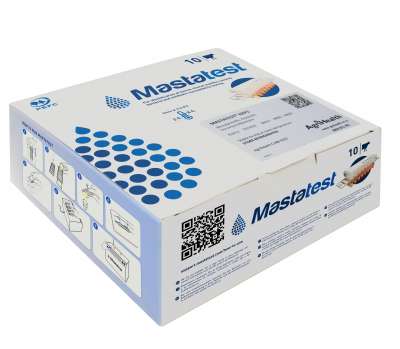Mastitis
Produce more milk of higher quality
Mastitis in dairy cows is caused by bacteria entering the teat canal and infecting the udder tissue. This potentially fatal mammary gland infection is the most common disease in New Zealand dairy cattle and in the dairy industry globally. The cow’s immune system produces white blood cells (called somatic cells) as part of the inflammatory response to the infection. The result can be subclinical mastitis (if the immune response keeps the infection under control) or clinical (if the bacteria overwhelm the cow’s immune response). Clinical mastitis is seen as flecks or clots in the milk and may result in a hot, swollen, and painful udder.
Maintaining a Bulk Milk Somatic Cell Count (BMSCC) under 150,000 cells/ml is a sign of a healthy productive herd. Quality milk improves farm profitability - research has shown there is a 2.1% loss in production for every doubling of somatic cell count over 100,000 cells/ml and most dairy processors financially reward ‘Milk Quality Excellence’.
Keeping the BMSCC low involves a combination of good milking practices, early identification and management of infected cows and strategic culling.
Key principles to manage mastitis effectively and produce more milk of higher quality
Minimise Mastitis
Colostrum herd:
Good mastitis management starts with minimising mastitis in the colostrum herd: Rapid Mastitis Test (RMT) each cow at the 8th milking after calving. If any quarter is RMT positive, retain the cow in the colostrum mob for another 4 milking's. If the RMT reaction is gets worse or is still positive on the 12th milking, then take a sterile milk sample to identify the bacteria (eg: Mastatest HiSCC test).
Rapid Mastitis Test (RMT) each cow at the 8th milking after calving. If any quarter is RMT positive, retain the cow in the colostrum mob for another 4 milking's. If the RMT reaction is gets worse or is still positive on the 12th milking, then take a sterile milk sample to identify the bacteria (eg: Mastatest HiSCC test).
If the mastitis turns clinical then test with the Mastatest clinical cartridge.
Watch this video for more tips on minimising mastitis in colostrum cows.
Milking herd: Identify and treat new clinical mastitis cases early:
Identify and treat new clinical mastitis cases early:
· Routine stripping of the herd (e.g., a quarter at every milking) will identify infected cows quicker to minimise the spread of infection. Do not worry about spreading infection while stripping!
· Remember to treat the cow with pain relief such as 3 days of KetoMax to help reduce inflammation.
· Cow-side testing with the Mastatest clinical cartridge allows you to identify the bacteria causing the mastitis and only treat (if needed) with the best antibiotic, saving money and improving cure rates.
· Bacteria from an infected cow may contaminate the cluster for the next five cows milked by that cluster.
· Ensure your cows have good teat skin condition all year round and optimal milking machine function and adopt efficient milking routines to minimise teat end damage.
Monitor Mastitis
The cows will tell you why they have mastitis! Assess 50 cows for teat skin condition and teat end damage in early, mid and late lactation as an early indicator of problems. The targets are teat skin condition - > 90% supple and teat end damage - > 80% normal.
The targets are teat skin condition - > 90% supple and teat end damage - > 80% normal.
If results are below target, then farmers should look to rectify possible causes or seek expert advice.
Download the teat scoring chart (farmer version) to assess and track progress, and for suggested actions.
Manage Mastitis
If you find a clinical mastitis case: · Mastitis is painful condition. Treating each case of clinical mastitis with a no milk withhold pain relief such as KetoMax for 3 days will improve cow wellbeing, recovery, and productivity. Watch this video for more info.
· Mastitis is painful condition. Treating each case of clinical mastitis with a no milk withhold pain relief such as KetoMax for 3 days will improve cow wellbeing, recovery, and productivity. Watch this video for more info.
· Routinely take milk samples from mastitis cows, test with Mastatest (on-farm rapid test) to find what bacteria is the causing mastitis and which antibiotic is the right treatment.
· Analysis of almost 200,000 Mastatest samples revealed that 10% of samples have no bacterial growth and 12% of samples are coliform/Gram negative, both do not require antibiotics, saving money on unnecessary treatment costs.
If you find a high SCC cow: · Test RMT positive cows and high SCC cows after herd test and at dry off with Mastatest HiSCC cartridge to find out what bacteria is in those cows.
· Test RMT positive cows and high SCC cows after herd test and at dry off with Mastatest HiSCC cartridge to find out what bacteria is in those cows.
· Use the results along with the cow's mastitis history to implement an effective management plan, such as milking last, dry-off or culling decisions.
Download the mastitis management flowchart for guidelines on managing high SCC cows.
Resources for vets and farmers
· Mastitis Management on-farm poster
· Produce more milk of higher quality on-farm poster
· New trends from analysis of NZ mastitis milk samples (TBMS10.4 - 2025)
· Teat scoring chart - farmer version
· Mastatest Flyer
Mastitis
Produce more milk of higher quality
Mastitis in dairy cows is caused by bacteria entering the teat canal and infecting the udder tissue. This potentially fatal mammary gland infection is the most common disease in New Zealand dairy cattle and in the dairy industry globally. The cow’s immune system produces white blood cells (called somatic cells) as part of the inflammatory response to the infection. The result can be subclinical mastitis (if the immune response keeps the infection under control) or clinical (if the bacteria overwhelm the cow’s immune response). Clinical mastitis is seen as flecks or clots in the milk and may result in a hot, swollen, and painful udder.
Maintaining a Bulk Milk Somatic Cell Count (BMSCC) under 150,000 cells/ml is a sign of a healthy productive herd. Quality milk improves farm profitability - research has shown there is a 2.1% loss in production for every doubling of somatic cell count over 100,000 cells/ml and most dairy processors financially reward ‘Milk Quality Excellence’.
Keeping the BMSCC low involves a combination of good milking practices, early identification and management of infected cows and strategic culling.
Key principles to manage mastitis effectively and produce more milk of higher quality
Minimise Mastitis
Colostrum herd:
Good mastitis management starts with minimising mastitis in the colostrum herd: Rapid Mastitis Test (RMT) each cow at the 8th milking after calving. If any quarter is RMT positive, retain the cow in the colostrum mob for another 4 milking's. If the RMT reaction is gets worse or is still positive on the 12th milking, then take a sterile milk sample to identify the bacteria (eg: Mastatest HiSCC test).
Rapid Mastitis Test (RMT) each cow at the 8th milking after calving. If any quarter is RMT positive, retain the cow in the colostrum mob for another 4 milking's. If the RMT reaction is gets worse or is still positive on the 12th milking, then take a sterile milk sample to identify the bacteria (eg: Mastatest HiSCC test).
If the mastitis turns clinical then test with the Mastatest clinical cartridge.
Watch this video for more tips on minimising mastitis in colostrum cows.
Milking herd: Identify and treat new clinical mastitis cases early:
Identify and treat new clinical mastitis cases early:
· Routine stripping of the herd (e.g., a quarter at every milking) will identify infected cows quicker to minimise the spread of infection. Do not worry about spreading infection while stripping!
· Remember to treat the cow with pain relief such as 3 days of KetoMax to help reduce inflammation.
· Cow-side testing with the Mastatest clinical cartridge allows you to identify the bacteria causing the mastitis and only treat (if needed) with the best antibiotic, saving money and improving cure rates.
· Bacteria from an infected cow may contaminate the cluster for the next five cows milked by that cluster.
· Ensure your cows have good teat skin condition all year round and optimal milking machine function and adopt efficient milking routines to minimise teat end damage.
Monitor Mastitis
The cows will tell you why they have mastitis! Assess 50 cows for teat skin condition and teat end damage in early, mid and late lactation as an early indicator of problems. The targets are teat skin condition - > 90% supple and teat end damage - > 80% normal.
The targets are teat skin condition - > 90% supple and teat end damage - > 80% normal.
If results are below target, then farmers should look to rectify possible causes or seek expert advice.
Download the teat scoring chart (farmer version) to assess and track progress, and for suggested actions.
Manage Mastitis
If you find a clinical mastitis case: · Mastitis is painful condition. Treating each case of clinical mastitis with a no milk withhold pain relief such as KetoMax for 3 days will improve cow wellbeing, recovery, and productivity. Watch this video for more info.
· Mastitis is painful condition. Treating each case of clinical mastitis with a no milk withhold pain relief such as KetoMax for 3 days will improve cow wellbeing, recovery, and productivity. Watch this video for more info.
· Routinely take milk samples from mastitis cows, test with Mastatest (on-farm rapid test) to find what bacteria is the causing mastitis and which antibiotic is the right treatment.
· Analysis of almost 200,000 Mastatest samples revealed that 10% of samples have no bacterial growth and 12% of samples are coliform/Gram negative, both do not require antibiotics, saving money on unnecessary treatment costs.
If you find a high SCC cow: · Test RMT positive cows and high SCC cows after herd test and at dry off with Mastatest HiSCC cartridge to find out what bacteria is in those cows.
· Test RMT positive cows and high SCC cows after herd test and at dry off with Mastatest HiSCC cartridge to find out what bacteria is in those cows.
· Use the results along with the cow's mastitis history to implement an effective management plan, such as milking last, dry-off or culling decisions.
Download the mastitis management flowchart for guidelines on managing high SCC cows.
Resources for vets and farmers
· Mastitis Management on-farm poster
· Produce more milk of higher quality on-farm poster
· New trends from analysis of NZ mastitis milk samples (TBMS10.4 - 2025)
· Teat scoring chart - farmer version
· Mastatest Flyer
Albiotic

CepraGold

DuoGold
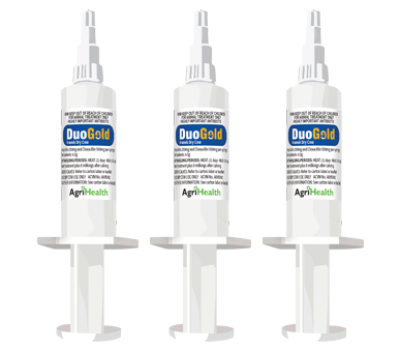
DuoXtra

IntraGold

KetoMax 15% Cow Care Pack

KetoMax 15% Injection
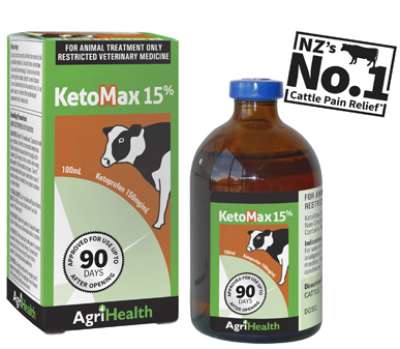
Mastatest lapbox
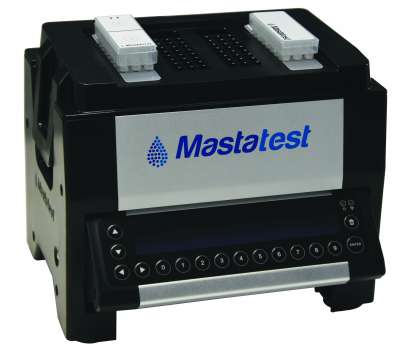
Mastatest NZP2 test kit
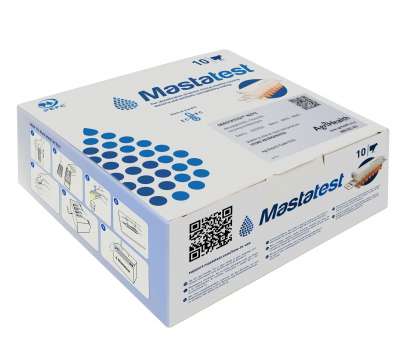
Mastatest NZP3 test kit
